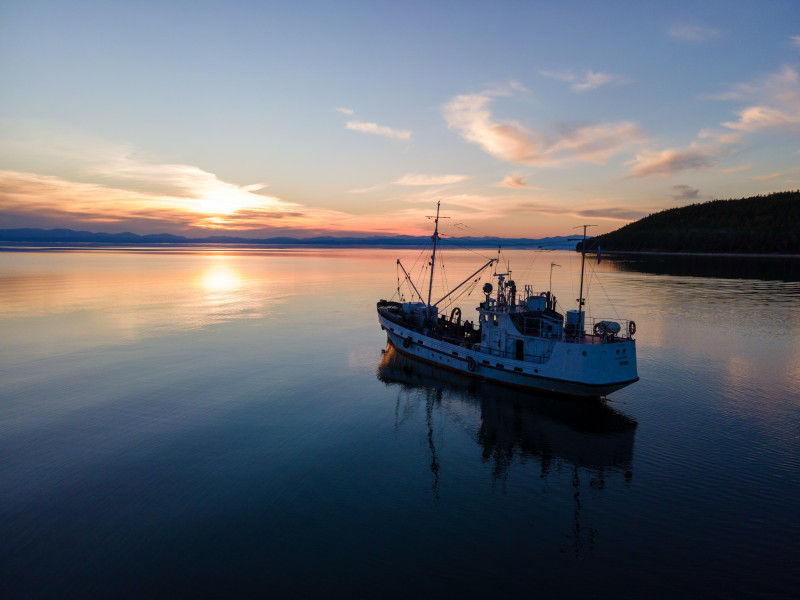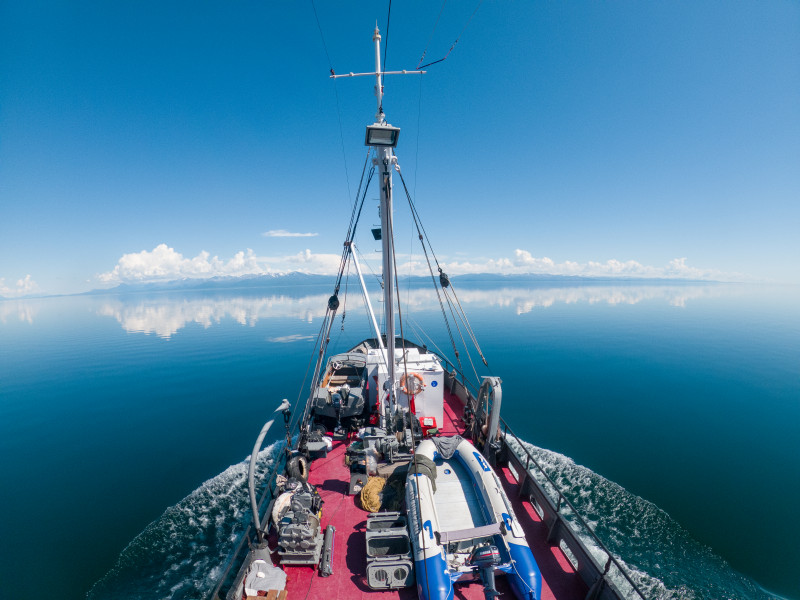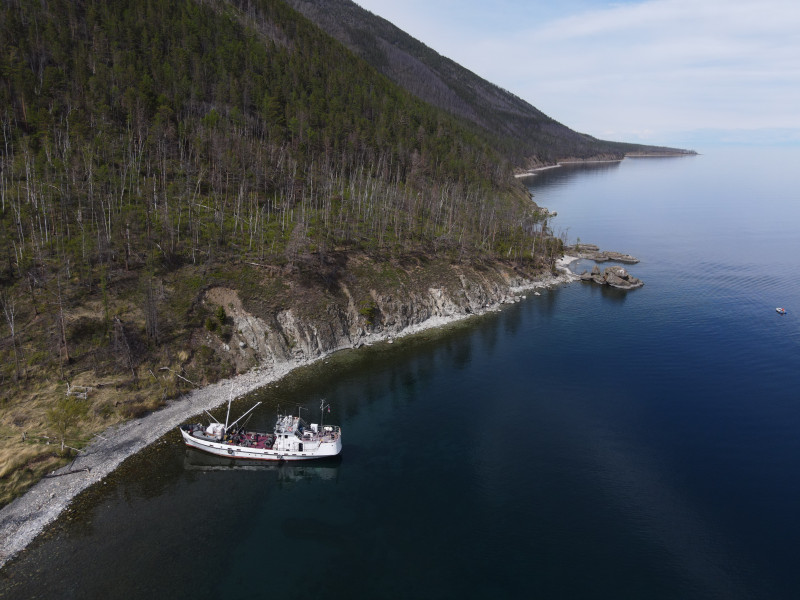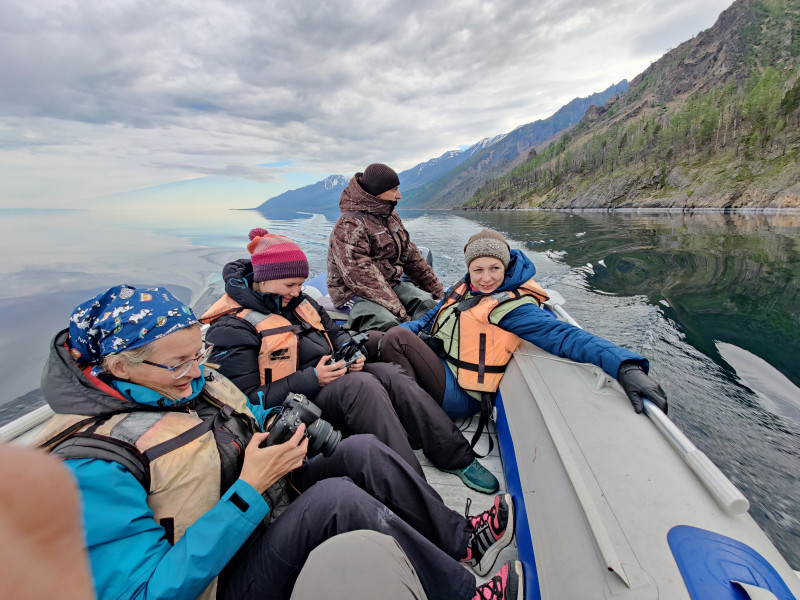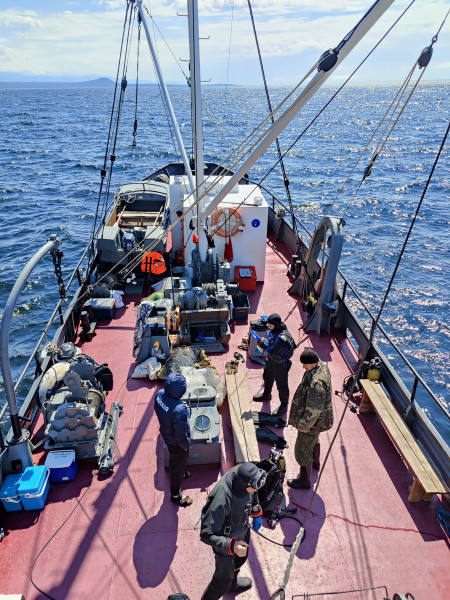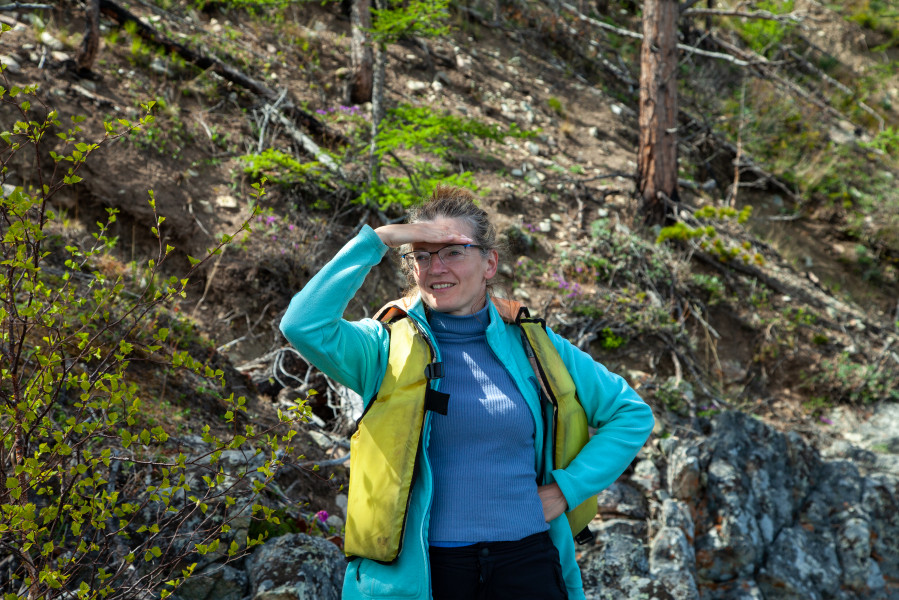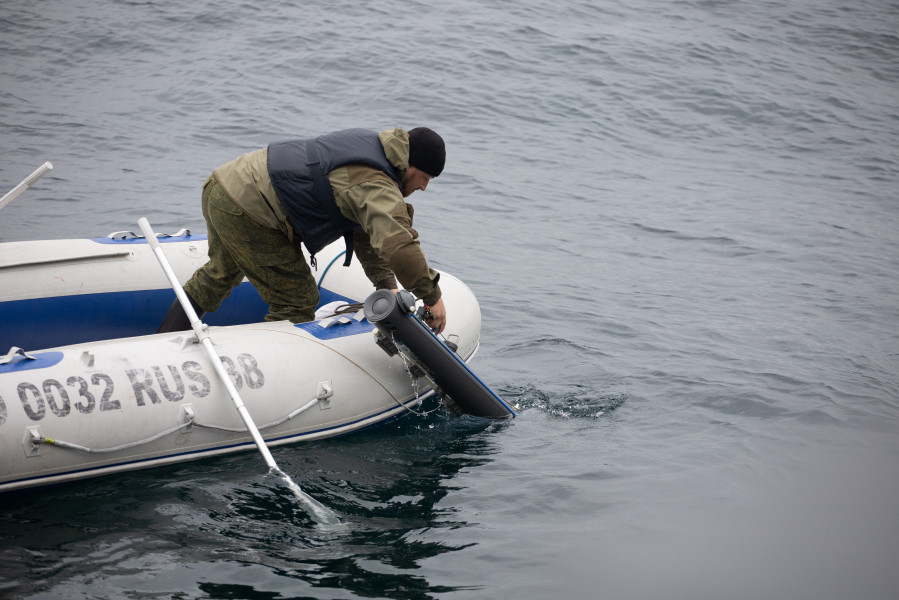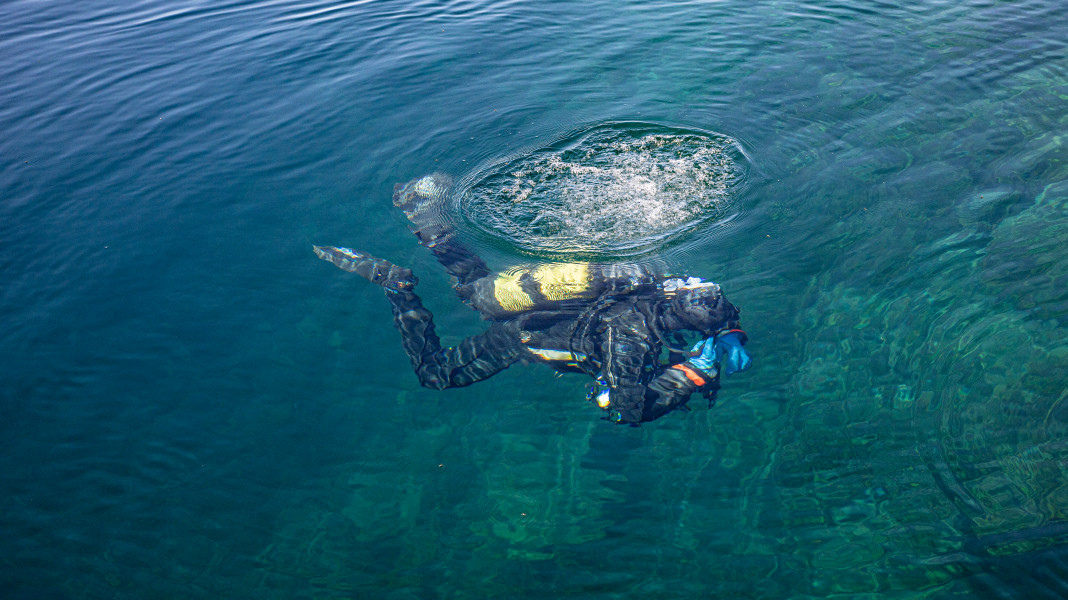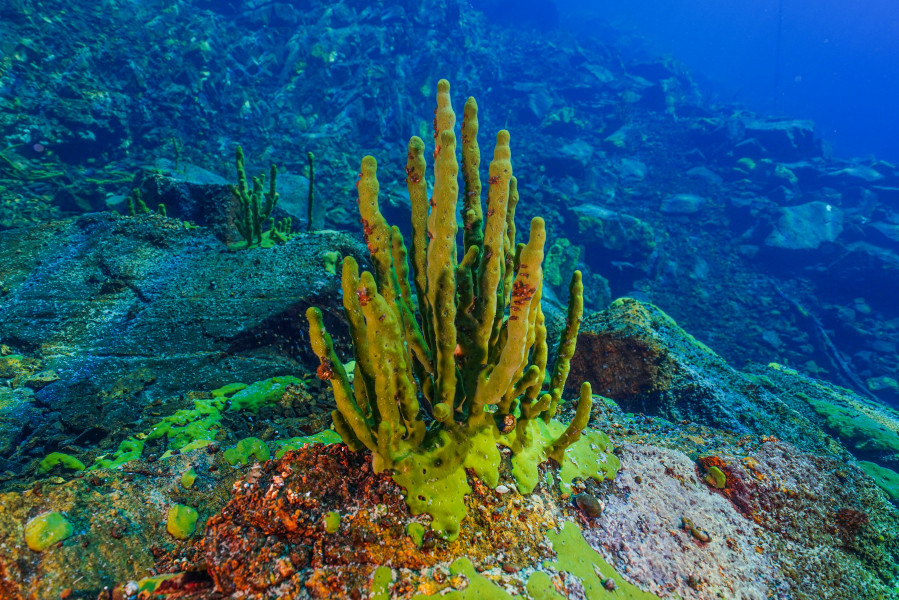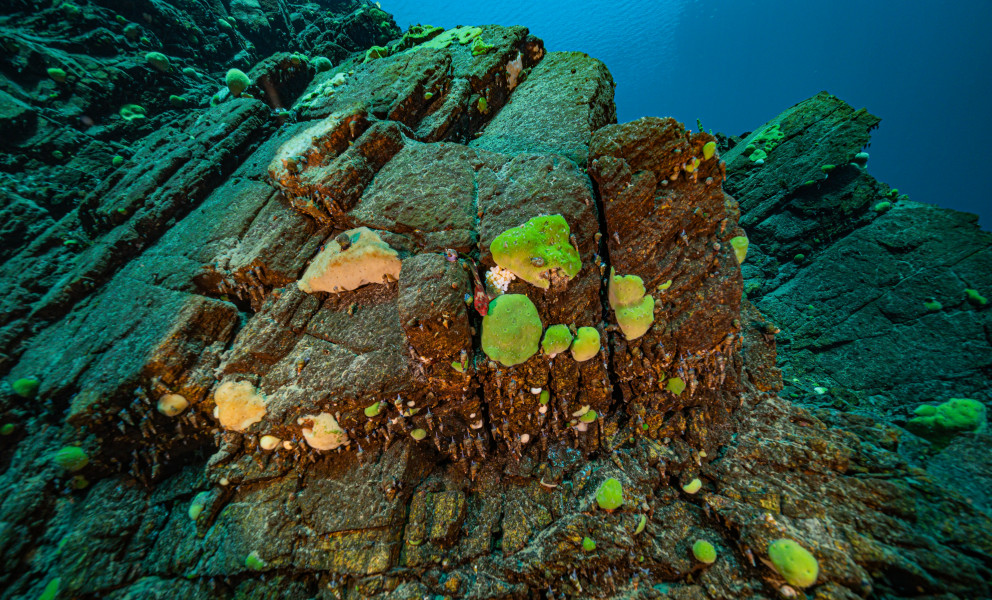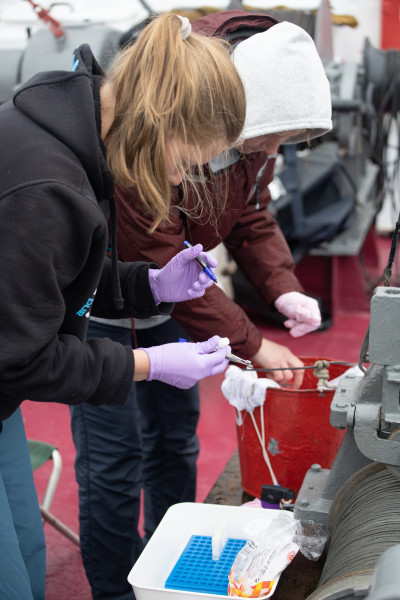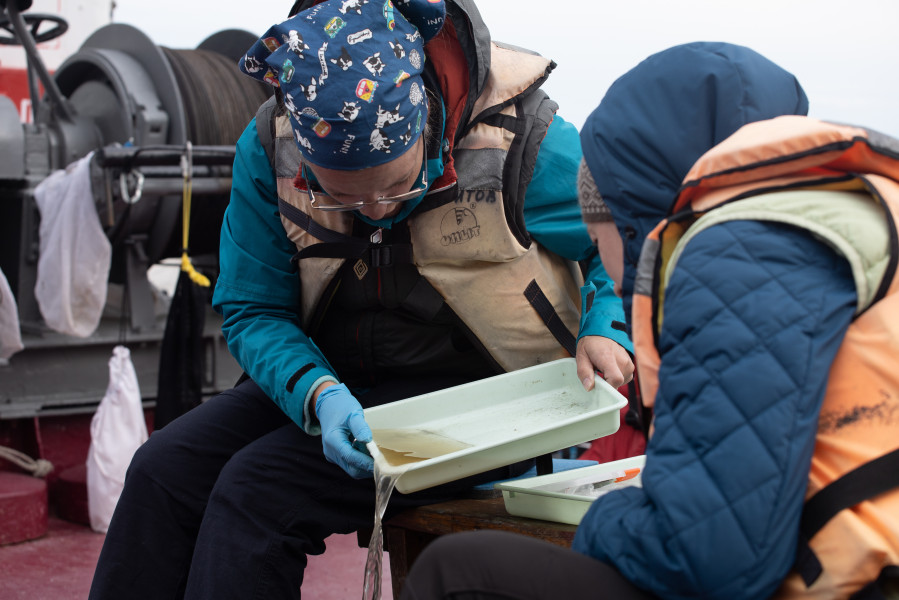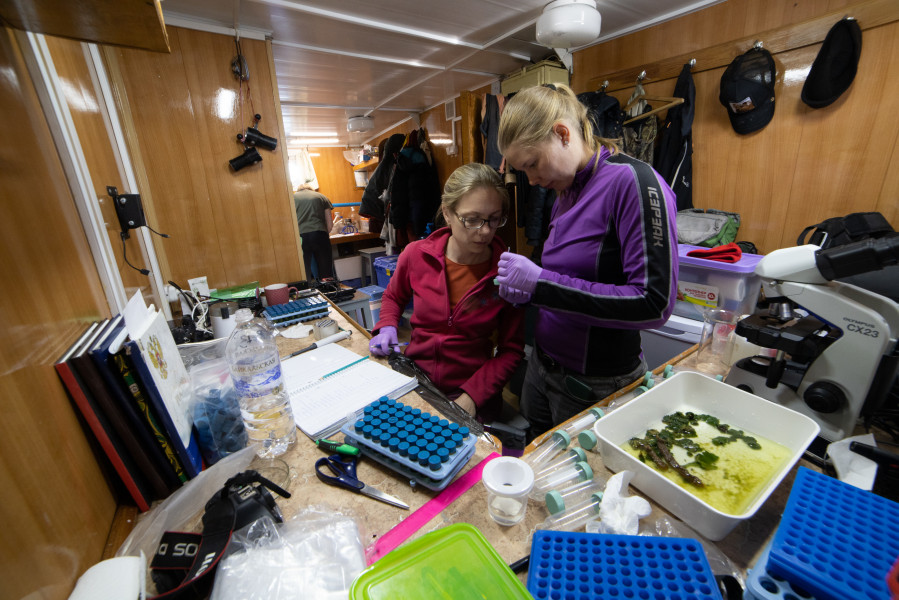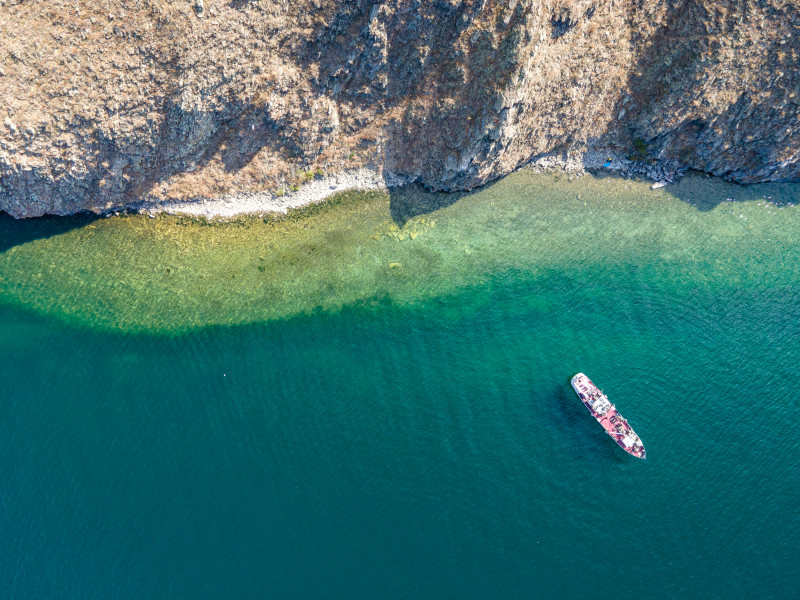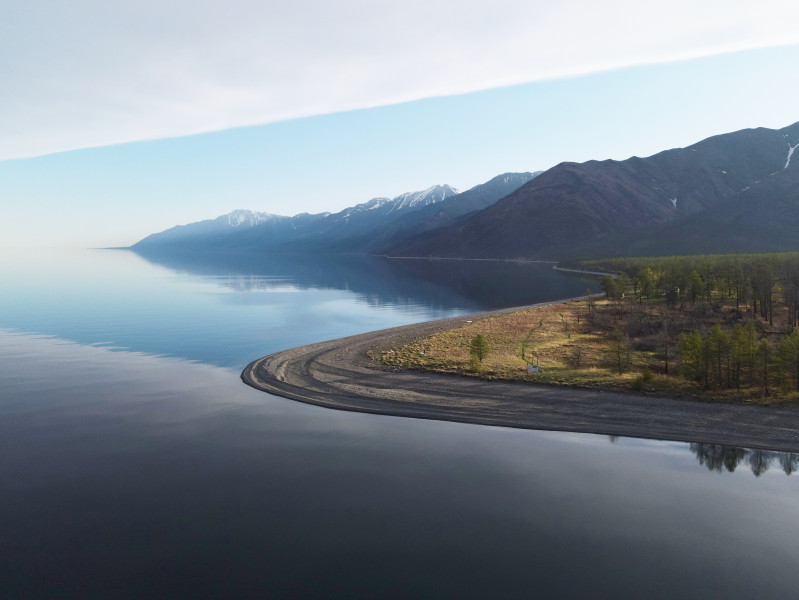Expedition on board the RV “Titov” from May 31 to June 14, 2022
From May 31 to June 14, 2022, the complex expeditionary works were carried out on the problem of mass morbidity and mortality of the Baikal sponges in the shallow zones of Baikal within the programmes “Study of seasonal and long-term transformations of the state of water bodies and watercourses in East Siberia in the context of climate change, geological environment and anthropogenic loads” (project № 0279-2021-0005) (led by A. Fedotov), “The genomics of symbiosis. Investigation of interactions between host and consortia of microorganisms and parasites” (project № 0279-2021-0011) (led by S. Belikov), and “The genetics of the communities of the Baikal organisms: structure of the genefond, strategies of the conservation” (project № 0279-2021-0010) (led by D. Shcherbakov).
A series of works on the Circum-Baikal expeditionary research activities was continued to assess the changes in the quantitative and qualitative composition of the sponge communities by year at the testing sites, transects, and monitoring stations of the sponge communities, and sampling of the baikal spongelids for laboratory research.
To monitor the state of morbidity of the Baikal endemic sponges, a quantitative sampling of the diseased individuals was carried out along all transects (Varnachka Valley, Ulanovo Station, Malye Olkhonskye Vorota Strait, Ukhan Cape, Elokhin Cape, Turali Cape, and Listvennichniy Bay). In total, during the expedition 365 samples of the diseased sponges of various species were collected. The collected samples were described (was given a visual characterization of the kinds of damages - necrosis, discoloration, biofilm, stains, and coating). As a result of this sampling, an analysis of the spread of the kinds of damages over the lake areas will be carried out taking into account the species identification of the sponges.
The samples of the diseased and healthy sponges Lubomirskia baikalensis and presumably Baikalospongia bacillifera (globular forms) were collected to analyze the diversity of the viruses in the associated communities to assess the current state of the Baikal endemic sponges. Sampling was carried out at Bolshye Koty Settlement, Elokhin Cape, and Listvyanka Settlement (Table 1). After sampling, the primary treatment of the sponge samples was conducted (washing, homogenization), and the prepared samples were frozen in liquid nitrogen for further analysis.
| Station | Number of samples L.baikalensis (diseased/healthy) |
Number of samples B.bacillifera (diseased/healthy) |
|---|---|---|
| Bolshye Koty Settlement | 5/5 | 3/7 |
| Elokhin Cape | 4/6 | - |
| Listvyanka Settlement | 1/4 | 5/6 |
The water samples of 20 liters were collected at Listvyanka Settlement, Elokhin Cape, and Varnachka Bay to analyze the diversity of the viral community. The primary water sample preparation was carried out (filtering, concentrating).
Removing of the loggers, reading of data, and setting of the temperature loggers were carried out to obtain the continuous year-round temperature data in the shallow zone of the lake (year-round recording of temperatures at transects of the stations in different areas of Baikal at depths of 4, 6, 12, 15, and 30 m).
The water and soil samples were taken from depths of 8-12 meters to study the natural radioactivity of Lake Baikal. The samples were collected at nine places (Elokhin Cape, Listvennichniy Bay, Varnachka Bay, Aya Bay, Kuyada Settlement, Malye Olkhonskye Vorota Strait, Nemnyanka Cape, Svyatoy Nos Peninsula, Listvyanichniy Island). During the analysis the concentrations of isotopes of K-40, Cs-137, U-325, U-238, Th-242 will be detected in the water and soil samples, the basis for creating the radioecological map of Lake Baikal will be laid.
The samples of L. baikalensis, B.bacillifera, B. intermedia, Sw. papyracea, L. abietina sponges, sediments, and water at Kuyada Settlement were also collected to determine the elemental composition and study the accumulation of the toxic elements in different species of sponge.
Within the expedition the underwater photo and video shooting of the reference sponges, which were placed earlier in 2015-2016, was done at Varnachka Settlement (garden of stones), Ulanovo railway station, Ukhan Cape, Elokhin Cape, and Turali Cape. New healthy species of sponges at Ulanovo railway station and Elohin Cape were additionally marked.





